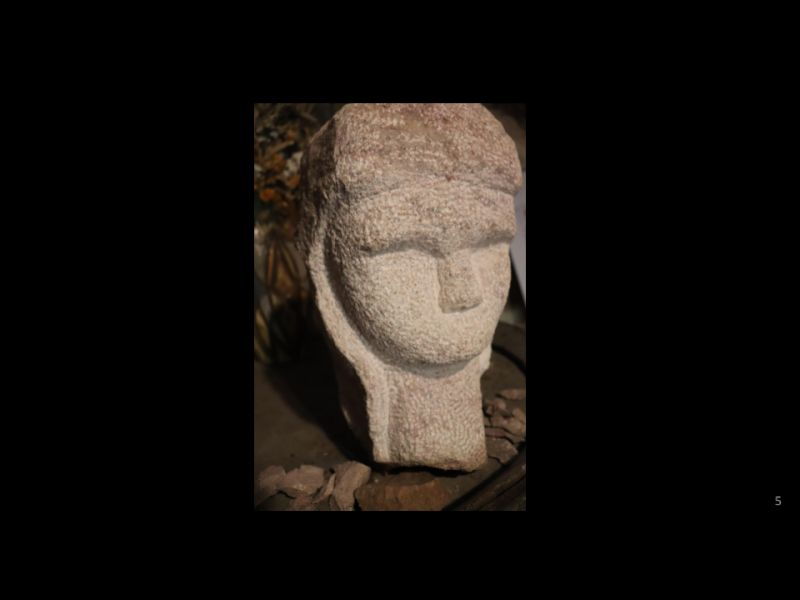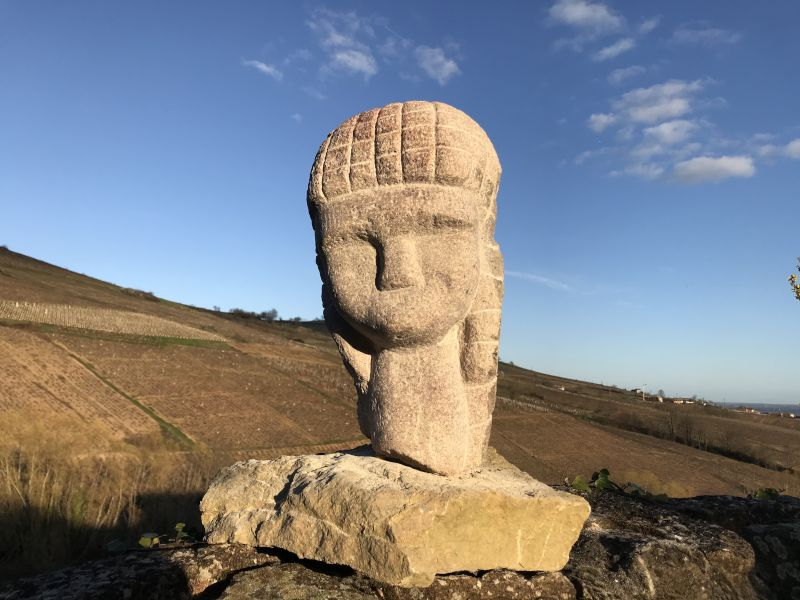Talk at TEDxUSMB merging decentralized technology, art creation and new value exchange models
Note : Version Française de l'article disponible ici :
The first TEDxUSMB was organized in November 2019 for the 40th anniversary of the Savoie Mont-Blanc University. In 2007, I was a student engineer there, in Annecy.
In this TEDx, I had the privilege to share with students part of my interests that gather decentralized technology, art creation and new kind of value exchanges. Vision enlightened with the presentation of Blockchain as a new language to track stories and exchanges of artwork.
Blockchain : a new playground for artwork | François Branciard | TEDxUSMBAnnecyIntroduction
Here Lady with the Hood! One of the oldest human face representation.
Carved around 25 thousand years ago.
Carved in a piece of ivory of few inches.
It is considered as one of the first artwork of humanity.
Dame de brassempouy Photo musee archeologie national©RMN-GP. Jean-Gilles Berizzi

If you are as curious as I am, you certainly wonder who creates it, why and for who?
Is it a simple decoration, lucky charm, jewelry, a present or votive offering.
In an artwork, beyond aesthetics, there is also the associate history, social and cultural context. Artwork will be in their current culture or on opposition to it.
For instance, the representation is atypical. Indeed, most of the others prehistoric Venus do not have these marked traits face.
Through artwork, men from the past speak to us. All of this creating magnitude and values for the object.
Unfortunately for such old artwork, apart from using our imagination, we cannot trace its history precisely.
But, can we do better today?
For what we create, what will remain in 5000, 10000 years?
Is there a way to record and trace the history of an artwork?
Which medium to use?
Which universal language can we choose?
Language, medium, and propagation
I would like to explore a solution with you. This solution combines two of my daily activities.
Sculpture en cours

First, on weekends, I learn sculpture. Stone sculpture.
For our support, stones are here there for millions of years. We can trust them to endure time.
I reproduce the lady with the hood. In a more primitive way, for now, as you can see.
Now we are seeking for a universal language to record artwork.
We can think of mathematics. More precisely cryptography.
This is what I use daily as a Blockchain developer during the week.
Cryptography will make it possible to sign messages ensuring authenticity and integrity. This is what we need to uniquely identify an artwork.
Cryptography is not new. It was an ancient art used since antiquity to encrypt messages. An art that became a science with the advent of computers in the 1970s.
To sum up,
- To reference the history of artwork: stone as support.
- Cryptography to mathematically write and sign our message.
But we don't yet have a way to publish and propagate this information.
This is where we will use the Blockchain.
What is a Blockchain?
What are the properties that will help us?
And how will it help to spread our information?
Blockchain
Blockchain is an ingenious layout and combination of existing technologies.
This will bring together internet technology, distributed databases, peer-to-peer networks. All of this allows a temporal timestamp of the events that are recorded.
And this ingenious arrangement is what we will call in IT: a protocol:
Blockchain : Protocol
A protocol is a set of rules you have to respect to be able to communicate well.
Protocols that you use daily, are, for instance when you send an e-mail, you use a messaging protocol.
If we take the TedX protocol, you have red circle carpet, a mic, softened light, limited time, speaker and public: a set of rules to communicate well.
To characterize the protocol, we add the concept of transfer :
Blockchain : Transfer Protocol
Respecting the protocol will assure non-duplication of the initial asset and so the value conservation.
On the contrary, in today's websites, you can copy past indefinitely. In our case, the information is like a token. A token that you can own and transfer. If I transfer to you my token, the protocol assures that you receive it but moreover it will assure that I didn't have it anymore.
This token can be a financial asset like cryptocurrency, but it can represent also a specific right, as voting right or in our case an artwork property right.
Blockchain : Peer To Peer Transfer Protocol
That means that no intermediary (to trust) is needed. This is a global network that will hold the information and not a central entity.
For artwork property, we do not want any centralized intermediary or unique conservative.
Because, in the long run in our target of a thousandth of years, any intermediary is doomed to disappear. We want to record the information in a decentralized network, distributed and so, resilient to forgetting.
Indeed, a public Blockchain is composed a thousand of nodes assuring longevity and universality if the information.
Artwork signature, Blockchain reference, and a breadcrumb trail
So, hold on, we gonna record our artwork for thousands of years!
First, we use cryptography to generate a unique address that will represent our artwork. On this address, we gonna records rules that will be applied for transferring this asset. Like a dedicated ledger for our artwork. This address and this code are stored in the Blockchain. The artwork is now referenced as an autonomous agent. The autonomous agent also calls smart contract in the literature on this topic. But I prefer to name it an autonomous agent.
Back on our physical object, you have your artwork, we have the reference propagated on a Blockchain thank to this autonomous agent, now how to link both?
To do that, when signing artwork, the artist creator takes sculpt scissor and engrave on the artwork the reference, the address of the autonomous agent. Besides his traditional signature.
This engraved reference on the stone will be the starting point of the story, like a breadcrumb trail to follow.

In this new autonomous agent register, the first record will be the information of the artist creator and the artwork description. Then all next owners will be recorded with the current price value of the artwork.
Thanks to the broad network, the creator, and any happy new owner, can show a cryptographic proof of the creation or ownership of this art asset without any intermediaries or third-party services.
But we can go beyond a simple register. We can code new rules. A rule example: the initial creator could receive a share of the total amount transfer at each purchase.
Another rule example, if the artist wants to establish a king of democracy rule, We can imagine that successive owners, and only them, could vote to set the artist reward percentage for each next purchase of the artwork.
Those mechanisms, that what you call programmable money: one of the characteristics provided by Blockchain technology.
When playing with this programmable money, we can also add and code constraints rules.
Among those constraints, it can be a price constraint, but also time constraint. Namely, being able to sell or transfer this artwork only one a year or every 10 years. And through this constraint, modify, or at least impact, the corresponding artwork value.
Finally, the signature process is not an end in itself but the beginning of a new story. A new story created and started from a single reference.
It changes the perspective that way: it not one person owning an artwork, but this is the artwork itself that will hold the story and all interactions in which it takes part, from the creation to successive sales.
Through the Blockchain, the artwork has become an autonomous agent inviting you to interact in a public and dynamic ledger. This is itself a new artistic process creation.
This autonomous agent or smart contract is a gathering proposal. It did not constraint you. If you do not want to interact with it, you don't.
Here, the value proposition to interact with it, it is to create an encoded story, thanks to cryptography, in a decentralized manner in a public ledger and accessible to everyone.
Conclusion
We can play with technology.
We can change the way we organize our exchanges.
And in a society where accumulation has become the rule of the game, it is an opportunity to re-think our society where capital accumulation has ended in a serious imbalance.
Man wealth is not in possession or accumulation of goods. But man wealthiness is about exchanging and sharing his creation.
In this presentation, I talk about artwork.
But I think that the word "work" is important too.
Work will takes a prominent place in your tomorrow fulfillment.
I am an entrepreneur for weeks now, and this is for me a transition toward a new meaning of work: going from wage earners to entrepreneurship, going from labor to work.
Blockchain allows you to innovatively trace history and exchanges.
**Over to you now to innovate and write also your own story! **
I wish you to find your personal inner sense that will lead you to your profession.
Your studies are not an accumulation of competences but an invitation to find and bring your own stone.
Future works to create in your respective professions.
Don't become technicians but workers ("ouvriers"), or may a say, "oeuvriers" !
To materialize this transition from techniques to works in your quest.
I will end with a Picasso quote that I made mine in life :
Learn the Rules Like a Pro, So You Can Break Them Like an Artist - Picasso
Thank you.
F.Branciard
2019–11–21 in Annecy at TEDxUSMB
Sculpture F.Branciard. "La dame à la Capuche Beaujolaise".2020.


Granite rock from Beaujolais crus.
Thanks to Aurélie Moreau and the Atelier for the help and apprenticeship on this sculpture.
Blockchain activities : http://luguslabs.com
Sculptures : https://www.instagram.com/fbranciardatelier/
Tweets : https://twitter.com/fbranciard